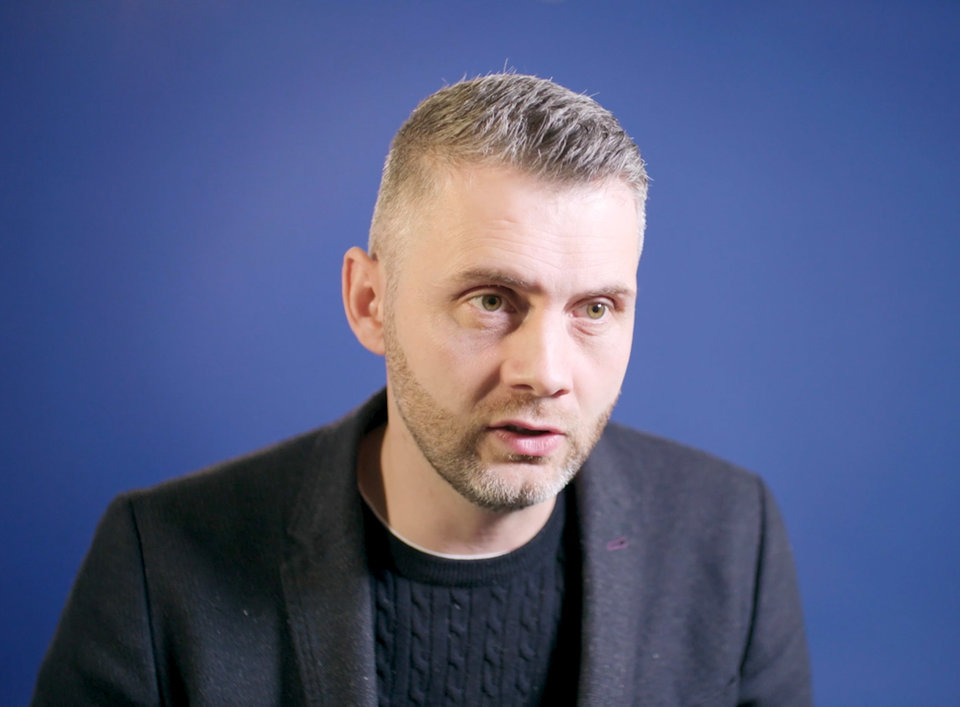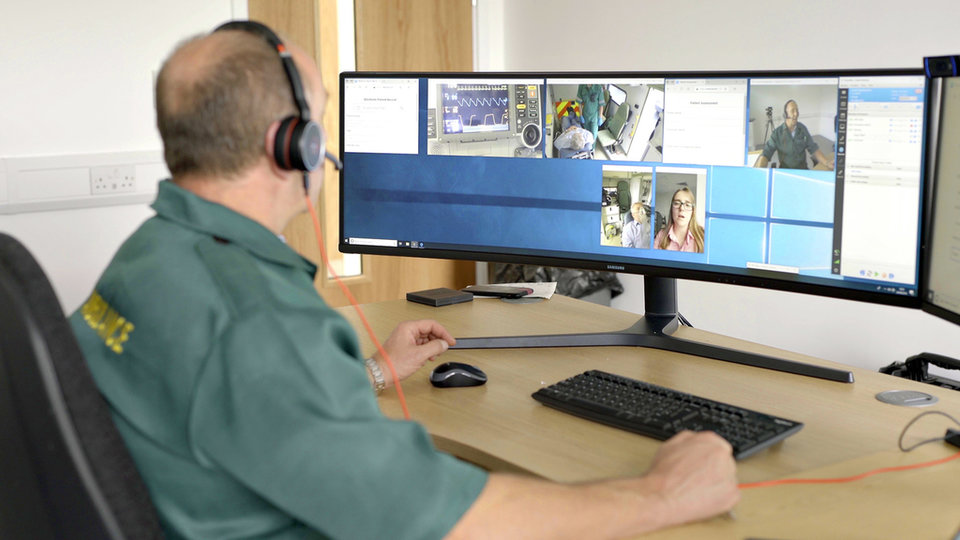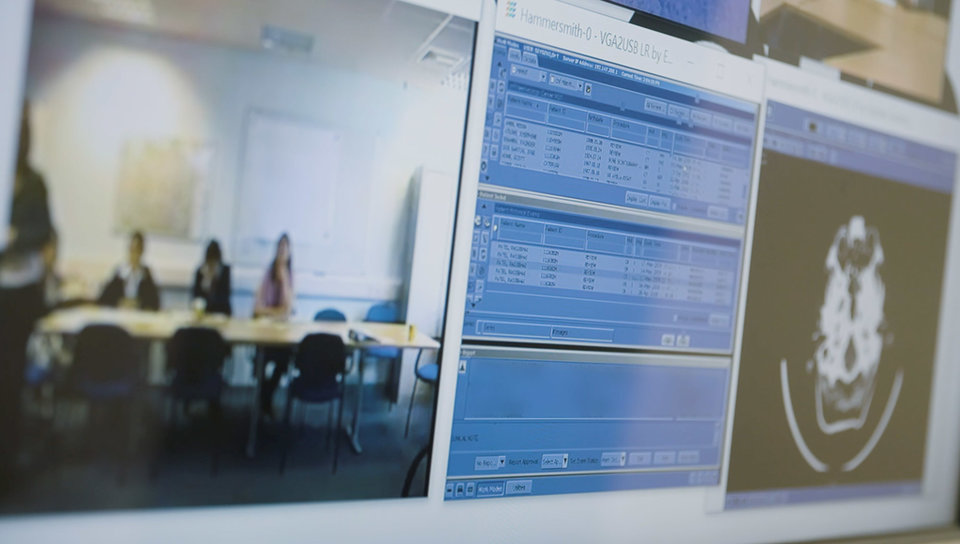
Images: Visionable
Visionable CEO Alan Lowe Images: Visionable
Q&A: a ‘Zoom for medics’ with Visionable
Dubbed ‘Zoom for medics’, UK-based Visionable is a video collaboration platform designed for hospital teams. Abi Millar talks to CEO and co-founder Alan Lowe about why this technology has been a useful tool to drive efficiency, and what the future holds for the company in a post-Covid-19 world.
Founded in 2015, UK-based Visionable provides video-based tools for hospital teams and patients and can be adapted to numerous clinical needs. Over the long term, it could be used to digitise the patient pathway, meaning patients could see a relevant specialist virtually and expeditiously, wherever they happened to be based.
To date, the platform has been used in the UK’s NHS for improved stroke care, as well as connecting hard-to-reach populations and teams in South Devon. The company also onboarded thousands of NHS staff at the peak of the Covid-19 crisis, at a time when face-to-face appointments were often deemed too risky.
CEO and co-founder of Visionable Alan Lowe explains why pivoting to digital is about more than just video calls.
Abi Millar: What’s the story behind Visionable? How did you get started?
Alan Lowe: My background is non-technical – I specialise in making services better for patients and running hospitals. I used to manage frontline services at Imperial Hospital in London, followed by the service programme for Westminster. My co-founder, Lord Victor Adebowale, is a social care specialist – he’s done a lot in social housing and has been in numerous NHS senior organisations.
We founded Visionable because we saw the need for technology that would enhance clinicians’ day-to-day work lives, but also patient outcomes. We also believed there is a global workforce challenge coming, with not enough specialised doctors to care for the patients. So, the company was set up to provide equity and accessibility to all patients. We registered it in late 2015 and got started in 2016.

Life Whisperer rates the viability of embryos for transfer. Image: Life Whisperer
Visionable is a video collaboration platform designed for healthcare teams. How does it differ from other video conferencing technology within healthcare?
There are two different types of video providers within the healthcare landscape. You have your video manufacturers, like Microsoft, Zoom and Cisco, and then you have telehealth companies that incorporate video. What most telehealth companies don’t have is their own video product – they use a third-party plugin.
We manufacture our own video technology, like Zoom or Cisco, but we have more capabilities than these generic platforms. We can connect multiple streams and have multiple cameras on the system. So, you could have a camera examining the patient’s ear or throat, and a camera offering a 360-degree view of the room. We can have any clinical image brought in as well.
The really high-level technical difference is that we are independent streaming, not video conferencing, and those independent streams allow you to do things unrestrictedly. That means as many cameras and as many data feeds in any way you like – it really is our USP. We have 29 patents on our independent streaming.
In terms of what it does for the clinicians, if you think of a generic tool like Zoom, you have to work in a particular way. You’re beholden to the needs of the product. We have a real configurable technology that allows different clinicians to use it in different ways and take the capabilities they need from it. What you end up with is one platform with lots of different use cases that suits the needs of the clinician.
And what’s interesting about video in healthcare is that hundreds of companies can do one-to-one video now, but it’s really about incorporating it seamlessly into the workflow. "So if you say to a clinician, OK you can add video, but it doesn’t improve the actual outcome", then you’re making it convenient for the patient but you’re not really adding anything for the doctor. What we try to do is digitise the pathway with the video product.
Who have your key customers been to date and how have they used the platform?
We started off in cancer, holding virtual multidisciplinary team meetings across the North West London Cancer Network (NWLCN). The clinicians, radiologists and the whole care team would get together digitally to discuss a patient with cancer. So, the patient would get access to all that expertise.
That was more about clinician to clinician, team to team. When we moved into stroke care, it was more about rapid response. In NHS East of England, where we started, there weren’t enough stroke doctors in the patch to be able to deliver care 24/7.
We had a stroke consultant on call from home, and when the patient got to hospital, we would bring the consultant in from home. He could see the patient, see the scan and make the right diagnosis so the nurse could administer the drug. With a stroke, the wrong drug will kill you, but the quicker you receive the right drug the greater your chance of a full recovery. They say that every 15 minutes’ delay takes three years off your life when you have a stroke, so it’s all about time.
We’re now looking at developing the stoke pathway and are doing some of the assessments in the ambulance before the patient gets to hospital. Getting better at shortening the decision-making process and treatment process is one of our big ambitions.

How has the Covid-19 pandemic affected demand for Visionable’s platform? What have been some of your key success stories throughout this difficult period?
What happened to begin with was that people decided to use any video they could. Some of the rules became a bit more lax – people were using FaceTime. We saw a huge spike in virtual consultations for obvious reasons. A lot of clinics were overwhelmed, and I think we got about ten, 11 times our usual usage in the March-April period.
We also created a patient-calling app specifically for Covid-19, which became an approved tablet application. It was similar to FaceTime but the family member didn’t have to download an app, they could just click a link and be straight into the call. On the hospital side they weren’t giving out any emails or phone numbers, so it was a secure one-to-one video app on the NHS. We rolled that out to a number of hospitals so patients with Covid could see their family members.
What we’re looking at now in the system is a strategy about what should and shouldn’t be digital and how you design services with a virtual element. We’re not building a faster horse here; we’re building a new vehicle. So, I think the post-Covid piece is: if you were designing hospitals from scratch how would you design the pathway? I think that’s the way hospitals are starting to think.
Visionable is now looking to its next fundraising round to support its growth internationally. Can you explain more about your fundraising efforts and how you intend to use the money?
We’re planning to expand into new countries – USA, UAE and Germany are our target anchor markets. Obviously, part of that expansion will be scaling products, sales teams, marketing - everything that goes with scaling a business. We’re values driven at Visionable, so we’re trying to create a culture of supporting clinicians and patients no matter where we expand.
Do you anticipate that demand for Visionable’s technology will continue even once the Covid-19 pandemic is over? Are we going to see the NHS pivot to digital?
I think video technology is going to become a staple. What the NHS needs is video plus – video is one ingredient, but it’s also about connecting to the diagnostics, the wearables, the AI, whatever else is in the pathway. Video has to be done in a way that adds value, and not just technology for technology’s sake.
I think it’s important to get your design thinking right early and constantly improve it. And it’s a partnership between suppliers and the customer, because the NHS shouldn’t have to put multiple technologies together – they need the support of the private sector to do that, and the only way to do this is with a co-creation mentality.
So digital is here to stay, but how we do it is really important. The patient should have an Amazon shopping experience, where you click and it’s seamless. A lot of things happen behind the scenes – diagnostics, testing, logistics – but to the end user it’s seamless and that’s a combination of a lot of people getting it right.
What are some of your goals over the short term and longer term?
We’ve got a big focus on stroke care – we’ve done a lot on stroke and now we’re now pioneering connected ambulances with the biggest telco companies and ambulance providers. We think we can become world leaders in the pathway, so that would be one ambition.
The rest is to build system-wide solutions. When I say a system, think of a region where you have the community, the pharmacy, the care homes, the hospitals, the patients, all on one connected platform like an underground system. Whatever line you have to be on, that’s seamless for the user, whether doctor-to-doctor, patient-to-patient, or organisation-to-organisation. We want to increase the reliability, reduce the friction and improve the outcome.
At Visionable, we’re building a team of people who’ve seen it and done it. They’re not in the business to sell video collaboration – they’re high profile individuals who are really trying to make a difference. But we think it’s a new approach and we don’t think there’s anyone out there doing it. Disrupting healthcare can be dangerous, so we want to keep disrupting healthcare responsibly.
Technology